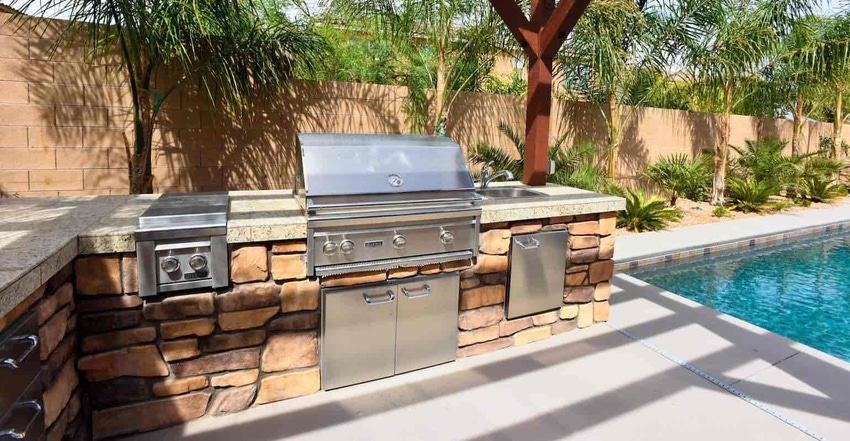As the foundation of your project, the materials you use when constructing an outdoor kitchen are critical. Here are three main steps to follow when making these important choices.

When you take on a new outdoor kitchen construction job, there are three necessary material choices that must be made.
First: Choose an appropriate structure or frame material for an outdoor kitchen
Outdoor kitchen frames are made from either wood, concrete or stainless steel. Wood is a natural material that can mimic the look and feel of an indoor kitchen, but the material can have drawbacks when used as framing outdoors. Safety is another important factor when choosing wood for framing, as it is combustible. If you choose to build a wood-framed base, it is recommended that you use pressure-treated pine.
Concrete block is said to be a less popular option to use as framing, says RTA Outdoor Living, but it can still be a great material with which to build. Concrete blocks are very durable and can hold up in almost any climate; however, it's the heaviest option, so installation of proper footings will need to be installed.
Steel frames are heat- and weather-resistant and very sturdy. As a result, they can be used to create both simple and elaborate outdoor kitchens. Steel frames can have negative effects, however, if you live in an area with a lot of moisture or freezing. This can cause frames to rust and corrode over time, weakening the structure's integrity.
Second: Choose the surface to which you'll apply the outdoor kitchen cladding material
For wood or metal frames, cement or backer board is most used. The cement board is attached to the outside of the frame and is designed to be the barrier to protect the structure from outside moisture. This step can be skipped when using a concrete block for the cladding material.
Third: Choose a suitable cladding material to pull together the outdoor kitchen look
Tile can be easy to install as cladding for an outdoor kitchen as it provides abundant color and pattern options, but it is a fragile material and can be volatile. Additionally, when using tile for countertops, it's important to note that grout lines are very porous and difficult to clean, which can make the surface unhygienic.
Stone and brick are traditional materials that can give outdoor kitchens sturdy and natural looks. However, real stone can be pricey, though manufactured veneer stone can be a more economical option. Other cladding material options include limestone, bluestone, concrete, granite, soapstone, quartz and stainless steel.
About the Author(s)
You May Also Like




